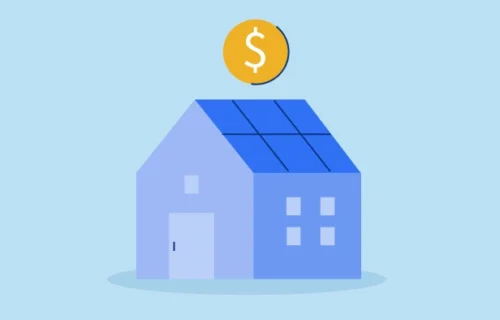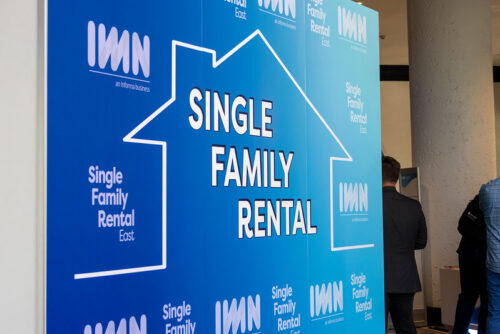
Connect with a Lima One expert today!
If you’d like to know more about this topic or see how it applies to your project, let’s talk.
The Ideal Debt Service Coverage Ratio (DSCR) for Your Rental
How to Choose the Target DSCR for Your Rental Property Investment
Real estate investing is a game of numbers, and one of the key numbers that rental property owners must know is Debt Service Coverage Ratio (DSCR). Whether you own one single family rental, a duplex, a portfolio of single family homes, or a multifamily unit, DSCR is a key way to evaluate the risk and profit potential of your investment.
What is Debt Service Coverage Ratio?
Debt Service Coverage Ratio is a calculation that compares your rental income on an investment property to the expenses of the investment. Obviously, the real estate loan (both principal and interest) you pay on the property is a big part of this calculation. But you also need to consider other standard, recurring expenses, notably:
- Taxes
- Insurance
- Association fees
Many investors use the acronym PITIA (property, interest, taxes, insurance, association) to represent these recurring expenses. Your monthly PITIA becomes the denominator in a fraction where the rental income is the numerator. So rental income divided by PITIA equals DSCR.
Here are some sample numbers: You own a property that brings in $1,000 in rental income a month. Your loan (property + interest) is $550/month. Insurance is $100/month, taxes are $100/month, and association fees are $50/month. Add those numbers up to determine that your PITIA Is $800 per month.
This means your DSCR is $1,000/$800, or 1.25.
What should my minimum debt service coverage ratio be?
If your rental income is less than the cost of PITIA, then you’re losing money on a monthly basis on your investment property. Your DSCR in this case will be less than 1.
Example: Rental income $1,000 / PITIA $1,200 = DSCR of 0.83.
This kind of ratio signals it’s time to raise rental rates, refinance the rental property, or a combination of both, because your real estate investment is underwater on a monthly basis.
If your DSCR equals 1, then your rental income exactly covers your recurring expenses.
Example: Rental income $1,000 / PITIA $1,000 = DSCR of 1.00.
This ratio does not mean you break even, because PITIA does not include all expenses on a property—just the recurring ones. So a DSCR of 1.00 means you will get no profit from your investment and have no way to handle unexpected expenses without losing money. Again, this kind of ratio indicates that you need to take action to have a viable real estate investment strategy.
However, merely increasing your DSCR above 1 isn’t enough to ensure a profit. That’s because non-recurring expenses for a rental property aren’t included in PITIA. These include things like:
- Standard repairs (repainting, etc.)
- Capital expenses (a new water heater or roof, for example)
- Property upgrades (such as kitchen countertops)
- Vacancy (months without rent)
These expenses aren’t recurring, but real estate investors should plan for them to happen. The way you do this is by increasing your DSCR to 1.3 or more. This difference will give you capital so you can deal with expenses if they come. If they don’t, then you have more profit, which is a plus.
Example: Rental income $1,000 / PITIA $750 = DSCR of 1.33.
One note here: The more properties you have, the lower DSCR you need. If you run a SFR (single-family rental) portfolio, then you may choose a minimum DSCR closer to 1.2. The reason is simple—the volume of properties means you have more actual cash on hand for repairs, lowering your risk.
Example: Rental income $5,000 / PITIA of $4,000 = DSCR of 1.25.
In this case, you would amass a total of $12,000 annually to cover rental vacancies, repairs, etc. Because you have piled up more total cash from having more properties, you can still turn a profit despite the lower DSCR.
What should my maximum debt service coverage ratio be?
We’ve talked about the minimum DSCR numbers you should look at. How high should your DSCR go?
The answer to that question goes back to your investment strategy. Here are two examples of solid investment strategies with dramatically different DSCR targets.
You’re a retiree who uses rental property income to supplement your lifestyle. You own a property free and clear. Your PITIA will be quite low because you pay nothing for loan principle or interest. In this example, Rental income of $1,000 / PITIA $250 = DSCR of 4.00. You’ll have a low-risk investment generating a nice return, which fits your needs because you’re dependent on the income.
You’re an aggressive real estate investor who wants to leverage equity in properties to purchase more rentals. You do a cash-out refinance for rental property to make your equity liquid. In this example, you’d likely aim for a new loan that resulted in something like this formula: Rental income $1,000 / PITIA of $725 = DSCR of 1.38. You don’t generate as much margin monthly, but higher DSCR would mean that you’re leaving equity on the table in your cash-out refinance, which limits other investment opportunities.
Takeaway
Calculating your DSCR is a vital step for any real estate investor, but it’s just as important to know what your target DSCR is. When you match the guidelines here to your personal real estate strategy, you will be able to choose the DSCR range that fits you best. Then you’re ready to find and finance deals to build your rental portfolio.
Subscribe for More Insights
Get the latest industry news & Lima One updates.









